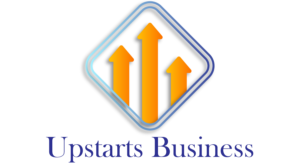Now, it’s not just about paying people and firing or hiring employees. It’s a lot more complex because an employee’s relationship with work is integrated with information technology and changes within the workplace, as well as increased concern for the well-being of people at work. Business owners and employers need to pay attention to centrifugal forces because productivity can be improved only in an atmosphere of trust. Let’s take a look at some modern HR innovations and trends, industry best practices, and how even employee data analytics software can help you win the game without compromising on ethics.
- Adopting Workplace Changes
The change to remote work and a hybrid mode of work is here to stay. These changes undoubtedly improve employee morale and broaden the prospects of recruiting, but they also complicate management. What’s the best way to ensure that people get the work done without micromanaging?
The solution is found in combining autonomy with structure. For instance, letting employees set their work schedules while giving out specific goals and deadlines. Controlio, which is a modern learner monitor control system, boosts the organization’s self-trust by not using supervision to spy on those working but rather by measuring progress on assigned tasks. However, the tipping point is that employees should understand what is being monitored and the reason behind it.
- Ethical Employee Surveillance: More than Just “Bossware”
There was a period in which overly controlling software termed “bossware” created problems around privacy. Now, there is more sophisticated apparatus for employee data analytics that offer productivity metrics instead of continual monitoring. Look for the following components:
- Activity dashboards that highlight views with respect to time spent on individual tasks.
- Assignments with deadlines integrated through a project management tool.
- Ethically designed frameworks that anonymize and use data in a non-invasive manner.
What is the purpose? Solving workflow issues, not micromanaging. You may, for example, decide to shift work or increase hiring if analytics show significant overtime hours in a department—and everyone will benefit due to this farsighted approach.
- Addressing Mental Health & General Well-Being
Even in highly supportive cultures, burnout and stress remain the top concerns, especially during remote working. More progressive companies are embedding mental health deeply into their culture through:
- Hours that can be changed to meet personal commitments for other activities.
- subsidized therapy sessions or meditation apps.
- Periodical check-ins in an informal style to assess morale rather than only productivity.
Take notes from one software company where turnover was slashed by 30% after the introduction of “no-meeting Fridays” and mental health days. Little changes will increase loyalty and productivity.
- Implementing DEI Policies to Achieve a City’s Goals
Employees and customers expect a level of equality that surpasses the minimum. Every workplace is expected to meet employee’s values, so it is important to undertake the following steps:
- Employing AI technologies while evaluating hiring practices to eliminate bias.
- Establishing mentorship programs for those belonging to economically disadvantaged groups.
- ensuring that proper procedures exist for reporting cases of discrimination and unjust treatment.
For example, one retail company saw a spike in diverse recruits of 25% within a year after adopting anonymous resume screening.
- Best Industry recommendations To Keep on Top
To manage these trends, consider these approaches:
- Provide ethical technology training to HR staff.
- Use industry benchmarks to check competitor policies.
- Gather employee feedback before the adoption of new tools or new policies.
The most effective ones are custom tailored around the thoughts and feelings of their users while retaining a level of sophistication.
Final Thoughts
Modern HR practices driven by technology can enable teams to analyze metrics in a more ethical manner and DEI initiatives simultaneously. The goal is to achieve a more caring and efficient workplace for all.
Which strategies do you think can best help solve challenges faced by your team? Let us know in the comments; we are interested to hear your ideas!

